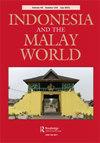Revelation and Misunderstanding
IF 0.9
3区 社会学
0 ASIAN STUDIES
引用次数: 1
Abstract
ABSTRACT This article considers the millenarian disposition among the Buton of North Seram sub-district, Maluku. Particular focus is paid to how the Buton interpret their inclusion in indigenous cosmologies, given their current precarious and humiliating existence. In Maluku, the Buton have long been regarded as lower-class people, outsiders who are excluded from local cultural schematics and are both socially and legally vulnerable. Instead of simply seeing their aspiration for a new and perfect social order as something springing from their desire to end their predicament, and rather than viewing their belief as something invented for this end, I suggest that the incongruent communication of cosmological tropes is important in the formation of their millenarian framework. The Buton understand the presence of their mythical representations in the indigenous cosmologies as evidence of the original order, which inspires them to believe that the Seram people are concealing the truth and that its revelation will upturn the current oppressive order. For the often referred Seram communities, however, the inclusion of Buton mythical representations is a way of assimilating a powerful, dangerous stranger and perpetuating the wholeness of their cosmology. The emphasis on the productivity of the misunderstanding rather than the creative act of expanding symbolic frameworks helps explain the peculiar relationality which grounds Buton millenarianism.启示与误解
摘要本文考察了马鲁古北瑟兰街道布顿人的千年性格。鉴于布顿人目前的不稳定和耻辱的存在,他们特别关注布顿人如何解释他们在本土宇宙学中的地位。在马鲁古,布顿人长期以来一直被视为下层阶级,被排除在当地文化版图之外,在社会和法律上都很脆弱。与其简单地将他们对新的、完美的社会秩序的渴望视为他们结束困境的愿望所产生的东西,而不是将他们的信仰视为为此目的而发明的东西,我认为宇宙学比喻的不协调交流在他们千年框架的形成中很重要。布顿人将他们在本土宇宙中的神话形象理解为原始秩序的证据,这激励他们相信瑟兰人在隐瞒真相,它的揭示将颠覆当前的压迫秩序。然而,对于经常被提及的瑟兰社区来说,加入布顿神话的代表是一种同化强大、危险的陌生人的方式,并使他们宇宙学的完整性永久化。强调误解的生产力,而不是扩大象征框架的创造性行为,有助于解释布顿千年主义的特殊关系。
本文章由计算机程序翻译,如有差异,请以英文原文为准。
求助全文
约1分钟内获得全文
求助全文
来源期刊

Indonesia and the Malay World
ASIAN STUDIES-
CiteScore
2.00
自引率
0.00%
发文量
17
期刊介绍:
Indonesia and the Malay World is a peer-reviewed journal that is committed to the publication of scholarship in the arts and humanities on maritime Southeast Asia. It particularly focuses on the study of the languages, literatures, art, archaeology, history, religion, anthropology, performing arts, cinema and tourism of the region. In addition to welcoming individual articles, it also publishes special issues focusing on a particular theme or region. The journal is published three times a year, in March, July, and November.
 求助内容:
求助内容: 应助结果提醒方式:
应助结果提醒方式:


